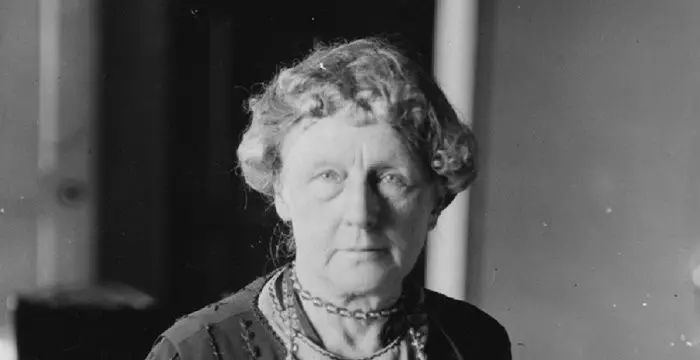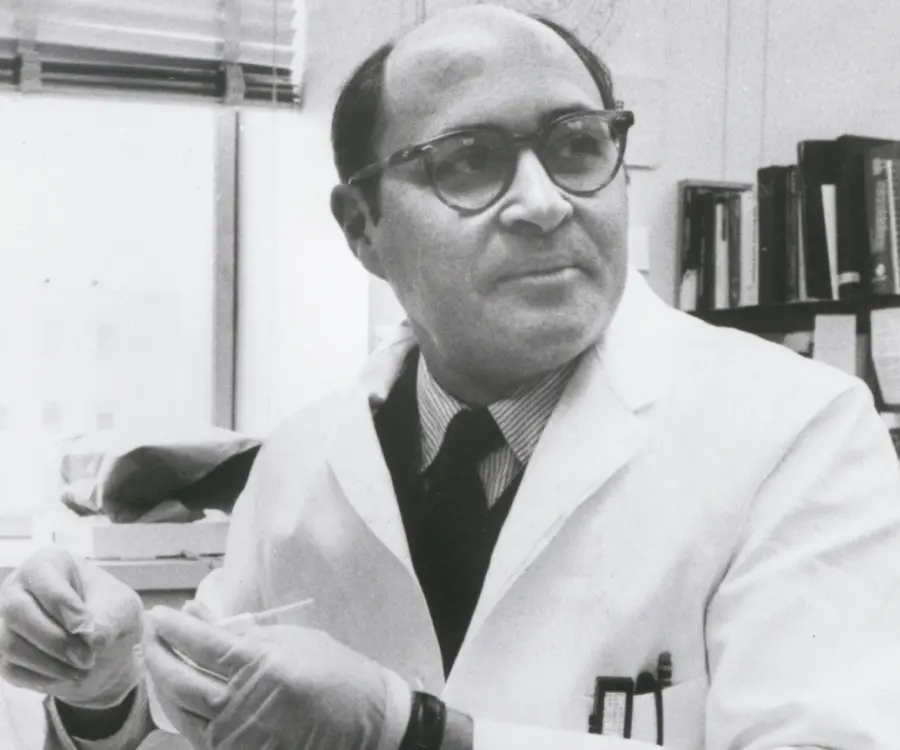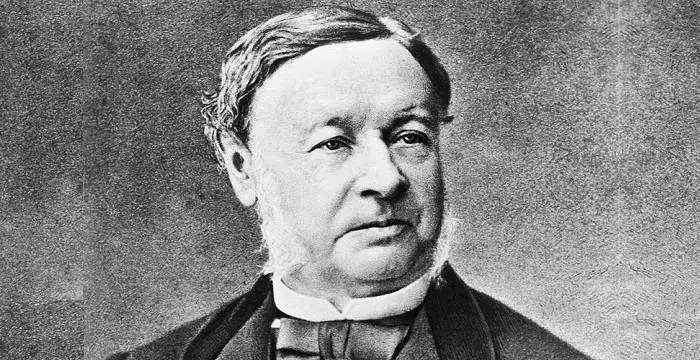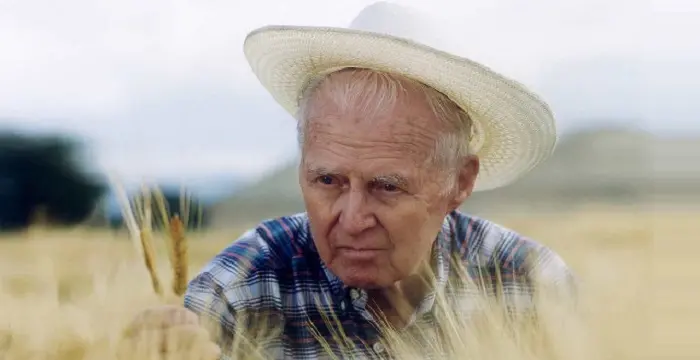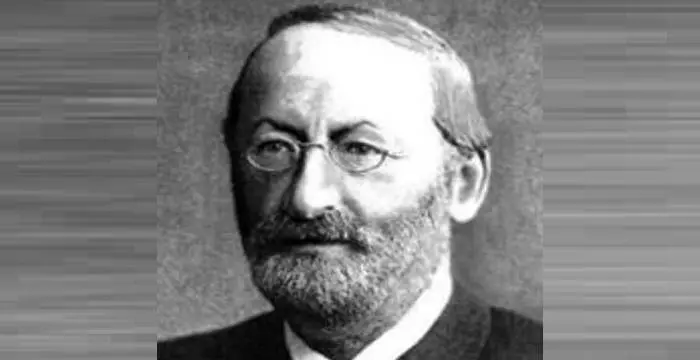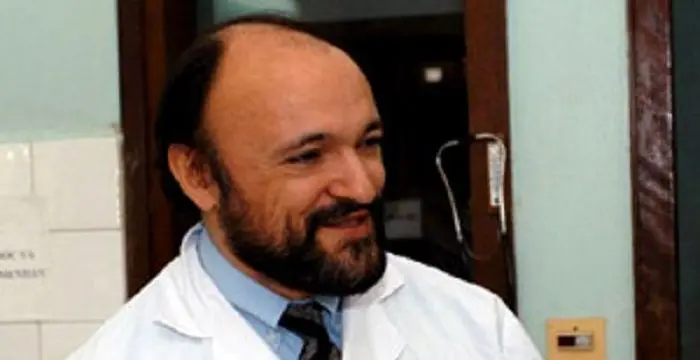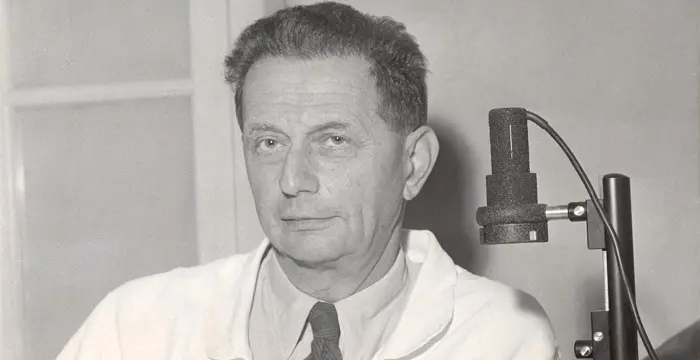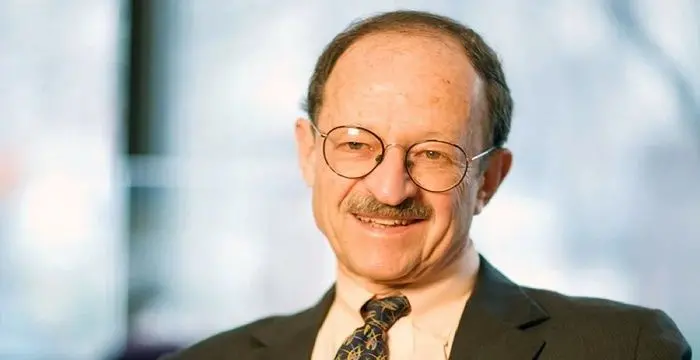
Daniel Nathans - Scientists, Family and Family
Daniel Nathans's Personal Details
Daniel Nathans was an American microbiologist who received the Nobel Prize in Physiology or Medicine in 1978
| Information | Detail |
|---|---|
| Birthday | October 30, 1928 |
| Died on | November 16, 1999 |
| Nationality | American |
| Famous | University Of Delaware, Scientists, Biologists, Microbiologists |
| City/State | Delaware |
| Spouses | Joanne Gomberg |
| Universities |
|
| Notable Alumnis |
|
| Birth Place | Wilmington, Delaware, US |
| Gender | Male |
| Father | Samuel Nathans |
| Mother | Sarah (Levitan) |
| Sun Sign | Scorpio |
| Born in | Wilmington, Delaware, US |
| Famous as | Microbiologist |
| Died at Age | 71 |
// Famous University Of Delaware
Shawn Johnson
Shawn Johnson is a retired American gymnast who won gold medal in balance beam at the 2008 Summer Olympics. This biography profiles her childhood, life, achievements, and timeline
Joe Biden
Joe Biden is an American politician who is the current Vice President of the United States. This biography of Joe Biden provides detailed information about his childhood, life, achievements, works & timeline.
Annie Jump Cannon
Annie Jump Cannon was an American astronomer and physicist. Check out this biography to know about her childhood, life, achievements, works & timeline.
Daniel Nathans's photo
Who is Daniel Nathans?
Daniel Nathans was an American microbiologist who received the Nobel Prize in Physiology or Medicine in 1978 along with Hamilton Othanel Smith of the United States and Werner Arber of Switzerland. They were awarded the prize for the discovery of ‘restriction enzymes’ which can be used to break the molecules of DNA into small manageable portions so that the characteristics can be studied better. This discovery later became the basic tool for research in genetics. Smith had isolated the bacterium called ‘Haemophilus influenzae’ earlier which was used by Nathans in the investigations he carried out in relation to the structure of the DNA of the ‘simian virus 40’ or ‘SV40’. This virus was the simplest one known for causing cancerous tumors. Nathans constructed a genetic map of the virus which helped in identifying the molecular structure of a cancer cell with the help of the ‘restriction enzymes’. He also took part in developing prenatal procedures for testing genetic diseases such as ‘sickle cell anemia’ and ‘cystic fibrosis’. He received many awards and honors for his work and was known as an outstanding mentor, teacher and researcher. He was also an able administrator and could execute his administrative work in a fair, thoughtful, deliberate and clear-headed manner.
// Famous Biologists
Juliane Koepcke
Juliane Koepcke is a German-Peruvian biologist, who was the lone survivor among the 92 passengers and crew of the ill-fated LANSA Flight 508 that crashed in the Peruvian rainforest on 24 December 1971. Know more about her life in this biography.
Theodor Schwann
Theodor Schwann was a German physiologist who discovered the Schwann cells in the peripheral nervous system. This biography of Theodor Schwann provides detailed information about his childhood, life, achievements, works & timeline.
Norman Borlaug
Norman Borlaug was an American biologist known as the “Father of the Green Revolution”. This biography of Norman Borlaug provides detailed information about his childhood, life, achievements, works & timeline.
Childhood & Early Life
Daniel Nathans was born on October 30, 1928 in Wilmington, Delaware, USA. His father was Samuel Nathans and his mother was Sarah Levitan, both Jewish immigrants from Russia.
He was the youngest of the eight children of Samuel and Sarah Nathans.
He did his schooling from the public schools in Wilmington and had to do part-time jobs from the age of ten to support his family.
After finishing school he attended the ‘University of Delaware’ to study philosophy, chemistry and literature.
At his father’s insistence he decided on a medical career after he received his B.Sc. degree in chemistry from the ‘University of Delaware’ in 1950.
He joined the ‘Washington University School of Medicine’ in St Louis, Missouri. He planned of returning to Wilmington after becoming a doctor.
Even though he loved the medical training very much, he was especially attracted towards laboratory research while working under the famous pharmacologist, Oliver Lowry during the summer of 1951.
He earned his medical degree in 1954 and resolved to pursue a career in academic medicine where he could treat patients as well as carry out research work.
Career
Daniel Nathans joined the ‘Columbia Presbyterian Hospital’ and worked as an intern for some time under the supervision of Robert Loeb.
Before the start of his medical residency period, he joined the ‘National Cancer Institute’ under the ‘National Institutes of Health’ in Bethesda, Maryland as a clinical associate. While working there, he divided his time treating patients who were receiving experimental chemotherapy for cancer and on research related to ‘plasma-cell tumors’ found in mice which were similar to ‘multiple myeloma’ found in humans.
Surprised at the lack of information on cancer biology, he started his research on the synthesis of proteins in ‘myeloma tumors’ and was soon able to publish his findings.
He returned to the ‘Columbia Presbyterian Hospital’ in 1957 to complete a two year medical residency and to carry on with his ambition of following a career in academic medicine.
He continuing with his research on the problem of protein synthesis whenever he had spare time after treating patients.
In 1959 he decided to devote all his time to research and joined the ‘Fritz Lipmann laboratory’ at the ‘Rockefeller Institute’ in New York as a research associate.
It was an interesting time for Nathans at the ‘Rockefeller Institute’, as great mysteries like the way in which ‘genetic material DNA’ directs the production of the required proteins and enzymes by the cells were being unraveled together by microbiologists, biochemists and geneticists.
Nathans initially went on with his efforts in synthesizing protein from the extracts of cells affected by myeloma. He pursued the problem with cultures of the E.Coli bacteria when persuaded by Smith, a postdoctoral colleague.
His three years at the ‘Rockefeller Institute’ convinced him that the ‘science of medicine’ was better than the ‘practice of medicine’ and he stared looking for a place where he could do more research as well as teach.
He joined the ‘John Hopkins University’ in Baltimore as a professor of microbiology in 1972 when the post was offered to him by W. Barry Wood who had been one of his mentors during medical school and now held the chair at the ‘John Hopkins University’.
He continued with his research on protein synthesis and also on the blocking effect of antibiotics like ‘puromycin’ on the process.
During the mid-1960s he was asked to give a few lectures on animal viruses when a couple of virologists left their posts. He became interested in viruses that cause tumors while preparing for his lectures.
In 1969 he took a six-month sabbatical leave to be at the ‘Weizmann Institute’ in Israel to learn more about the techniques of cell-culture and about a small tumor virus known as the ‘simian virus 40’ or ‘SV40’.
While he was in Israel, his colleague Hamilton Smith at the JHU informed him about the bacteria called ‘Haemophilus influenzae’ that could cut the DNA of other species at particular places. He immediately recognized that such an enzyme could be used to make small uniform fragments of the DNA of a virus so that it could be mapped and its structure determined.
He brought back some of the SV40 with him from Israel and started to apply the enzyme discovered by Smith on it and other ‘restriction enzymes’ on it. Soon they were able to map the ‘SV40’ virus and the ‘restriction enzymes’ was established as the tool for molecular biology and genetics.
He continued his researches on SV40 through the 1980s and later shifted from tumor viruses to cellular genes which got activated when cells were given stimulation to grow and multiply.
He served as the director of the ‘Microbiology Department’ of the JHU from 1972 to 1982.
He served as the ‘Senior Investigator’ of the ‘Howard Hughes Medical Institutes from 1981 to 1999.
He served as the interim president of JHU during from 1995 to 1996 after which he returned to his research work.
Major Works
Daniel Nathans published 138 books, articles and chapters during his entire career.
Awards & Achievements
Daniel Nathans received the ‘Selman Waksman Award’ in Microbiology’ in 1967.
He was awarded the Nobel Prize in 1978 and the ‘National Medal of Science’ in 1993 along with six honorary doctorates.
The ‘McKusick-Nathans Institute of Genetic Medicine’ was founded by JHU in 1999.
Personal Life & Legacy
He was married to Joanne Gomberg, a lawyer, whom he had met in Bethesda. They had three sons from the marriage named Eli, Ben and Jeremy.
Daniel Nathans died of leukemia on November 16, 1999 in Baltimore.
Trivia
Daniel Nathans loved to read both history and fiction and also liked spending time with his family.
// Famous Scientists
Juliane Koepcke
Juliane Koepcke is a German-Peruvian biologist, who was the lone survivor among the 92 passengers and crew of the ill-fated LANSA Flight 508 that crashed in the Peruvian rainforest on 24 December 1971. Know more about her life in this biography.
Henry Cavendish
Henry Cavendish was a theoretical chemist and physicist, renowned for discovery of hydrogen and calculation of the mass of earth. To know more about his childhood, profile, timeline and career read on
Konstantin Tsiolkovsky
Konstantin Tsiolkovsky was a Russian rocket scientist and a pioneer of astronautics. This biography provides detailed information about his childhood, family, personal life, career, achievements, etc.
Daniel Nathans's awards
| Year | Name | Award |
|---|---|---|
Other | ||
| 0 | NAS Award in Molecular Biology (1976) | |
| 0 | Nobel Prize in Physiology or Medicine (1978) | |
| 0 | National Medal of Science (1993) | |
Daniel Nathans biography timelines
- // 30th Oct 1928Daniel Nathans was born on October 30, 1928 in Wilmington, Delaware, USA. His father was Samuel Nathans and his mother was Sarah Levitan, both Jewish immigrants from Russia.
- // 1950At his father’s insistence he decided on a medical career after he received his B.Sc. degree in chemistry from the ‘University of Delaware’ in 1950.
- // 1951Even though he loved the medical training very much, he was especially attracted towards laboratory research while working under the famous pharmacologist, Oliver Lowry during the summer of 1951.
- // 1954He earned his medical degree in 1954 and resolved to pursue a career in academic medicine where he could treat patients as well as carry out research work.
- // 1957He returned to the ‘Columbia Presbyterian Hospital’ in 1957 to complete a two year medical residency and to carry on with his ambition of following a career in academic medicine.
- // 1959In 1959 he decided to devote all his time to research and joined the ‘Fritz Lipmann laboratory’ at the ‘Rockefeller Institute’ in New York as a research associate.
- // 1967Daniel Nathans received the ‘Selman Waksman Award’ in Microbiology’ in 1967.
- // 1969In 1969 he took a six-month sabbatical leave to be at the ‘Weizmann Institute’ in Israel to learn more about the techniques of cell-culture and about a small tumor virus known as the ‘simian virus 40’ or ‘SV40’.
- // 1972He joined the ‘John Hopkins University’ in Baltimore as a professor of microbiology in 1972 when the post was offered to him by W. Barry Wood who had been one of his mentors during medical school and now held the chair at the ‘John Hopkins University’.
- // 1972 To 1982He served as the director of the ‘Microbiology Department’ of the JHU from 1972 to 1982.
- // 1978 To 1993He was awarded the Nobel Prize in 1978 and the ‘National Medal of Science’ in 1993 along with six honorary doctorates.
- // 1981 To 1999He served as the ‘Senior Investigator’ of the ‘Howard Hughes Medical Institutes from 1981 to 1999.
- // 1995 To 1996He served as the interim president of JHU during from 1995 to 1996 after which he returned to his research work.
- // 1999The ‘McKusick-Nathans Institute of Genetic Medicine’ was founded by JHU in 1999.
- // 16th Nov 1999Daniel Nathans died of leukemia on November 16, 1999 in Baltimore.
// Famous Microbiologists
Ferdinand Cohn
Ferdinand Cohn was a German biologist who is considered as the father of bacteriology and microbiology. Check out this biography to know about his childhood, life, achievements, works & timeline.
Louis Pasteur
Louis Pasteur was a French chemist and microbiologist who developed the first vaccines for rabies and anthrax. This biography of Louis Pasteur provides detailed information about his childhood, life, achievements, works & timeline.
Carlo Urbani
Italian epidemiologist Carlo Urbani was the first person who identified SARS as a highly contagious disease. Find out more about his life in this biography.
Hamilton O. Smith
Hamilton Othanel Smith is an American microbiologist who received the Nobel Prize for Physiology or Medicine in 1978. This biography provides detailed information about his childhood, life, career, research, achievements and timeline.
André Lwoff
André Michel Lwoff was a French microbiologist, geneticist and protozoologist, who received the ‘Nobel Prize in Physiology or Medicine’ in 1965. This biography profiles his childhood, life, research, achievements and timeline.
Harold E. Varmus
Harold E. Varmus is an American scientist who won a share of the 1989 Nobel Prize in Physiology or Medicine. This biography of Harold E. Varmus provides detailed information about his childhood, life, achievements, works & timeline.
Daniel Nathans's FAQ
What is Daniel Nathans birthday?
Daniel Nathans was born at 1928-10-30
When was Daniel Nathans died?
Daniel Nathans was died at 1999-11-16
Where was Daniel Nathans died?
Daniel Nathans was died in Baltimore, Maryland, US
Which age was Daniel Nathans died?
Daniel Nathans was died at age 71
Where is Daniel Nathans's birth place?
Daniel Nathans was born in Wilmington, Delaware, US
What is Daniel Nathans nationalities?
Daniel Nathans's nationalities is American
Who is Daniel Nathans spouses?
Daniel Nathans's spouses is Joanne Gomberg
What was Daniel Nathans universities?
Daniel Nathans studied at University Of Delaware
What was Daniel Nathans notable alumnis?
Daniel Nathans's notable alumnis is University Of Delaware
Who is Daniel Nathans's father?
Daniel Nathans's father is Samuel Nathans
Who is Daniel Nathans's mother?
Daniel Nathans's mother is Sarah (Levitan)
What is Daniel Nathans's sun sign?
Daniel Nathans is Scorpio
How famous is Daniel Nathans?
Daniel Nathans is famouse as Microbiologist


